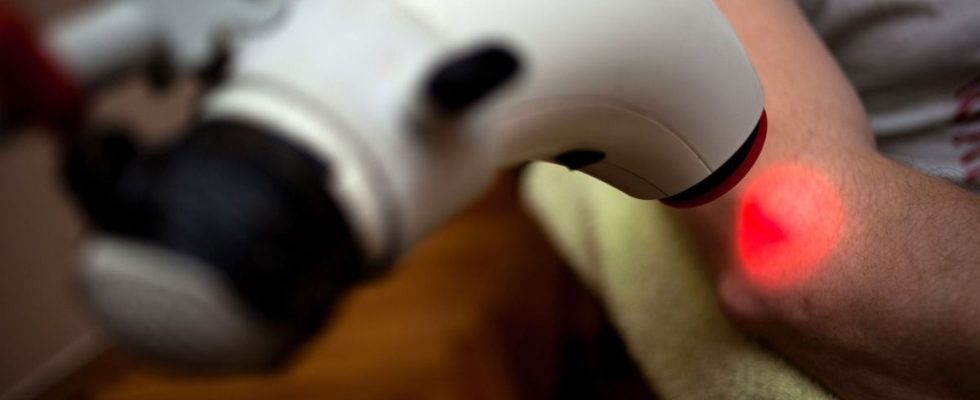Published on
Updated
Reading 3 min.
Partly mysterious and difficult to treat, fibromyalgia could benefit from a new painless technique with no side effects: photobiomodulation. New hope for many patients, presented by Dr Philippe Wagner, oncologist and algologist.
Fibromyalgia: difficult management
Fibromyalgia is a chronic condition characterized by persistent widespread pain and sensitivity to pressure. Added to this are chronic fatigue, sleep disorders, cognitive disorders and anxiety which quickly harm the patient’s quality of life. However, even if fibromyalgia affects 2% of French people (75% of whom are women), there is currently no authorized drug treatment to alleviate the suffering of patients.
The treatment is based on a multidisciplinary approach, aiming to reduce symptoms, alleviate the chronic fatigue experienced, improve patients’ sleep and reduce daily disability. Medication options (painkillers, even antidepressants or anxiolytics) are not without side effects. The recommendations provide for regular adapted physical activity (APA), gentle gyms (tai chi or qi gong type) or even psychotherapeutic approaches (such as behavioral and cognitive therapies).
But a new technique was recently presented by the Fibromyalgia SOS association: photobiomodulation.
Faced with fibromyalgia, integrative health (the joint use of biomedical techniques and Non-Pharmacological Interventions) is essential. It requires a care pathway coordinated by health professionals and therapists who are able to offer the best possible therapy for the right patient at the right time.
In this context, Dr. Jean-Philippe Wagner, oncologist and algologist in Dunkirk, presented the benefit of photobiomodulation in the face of fibromyalgia. This painless technique relieves all types of pain by using light to regenerate cells, practiced in the Theralum center in Dunkirk and in Valenciennes.
This promising technique is set to spread across France. Developed in the 1970s, it is known to dentists, gynecologists and veterinarians but has recently been used in oncology and for pain.
Photobiomodulation is a treatment technique using the properties of red and infrared light; it acts directly on biological processes, particularly at the level of the mitochondria, to rebalance the oxidoreductive potential and thus act on inflammation, pain, cellular regeneration, particularly at the level of neurological tissues. It has no side effects.
Concretely, it involves exposing a painful part of the body (or the whole body – we then speak of “whole body photobiomodulation”) to red or infrared light (600 to 950 nanometers) so that it penetrates deep under the skin (in the hypodermis) in order to act on blood vessels and nerve endings.
“By stimulating CCO, we increase intracellular energy transfer, we produce vasodilator nitric oxide (NO), we promote healing and (above all) we eliminate algogenic toxins, those which cause and maintain pain” specifies the doctor.
Effects proven by several studies
During the presentation, the specialist cited several encouraging studies that evaluated the effectiveness of photobiomodulation in the face of fibromyalgia symptoms. Among them, we can cite:
- A double-blind, randomized Spanish study showed a reduction in pain in patients treated with photobiomodulation for 3 weeks (three weekly treatments) and with benefits lasting 4 weeks after treatment.
- An English study demonstrated that whole-body photobiomodulation for 4 weeks (12 sessions) improved painful symptoms and the quality of life of patients with an impact that could last up to 6 months.
As we can see, the treatment therefore recommends 2 to 3 sessions per week for 3 to 6 weeks.
Where can we benefit from it?
In France, two pain centers offer photobiomodulation sessions with 70% reimbursement by Social Security (in Dunkirk and Valenciennes). Seven other machines are accessible in Rennes, Paris, Corsica… but without reimbursement possible. Each session costs around 30-40 euros.
More information on the association’s website Fibromyalgia SOS.
